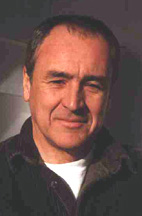
Like most people who work for corporations, I occasionally have to attend focus groups. The value of these gatherings, where paid volunteers are knowingly spied upon by market researchers through a two-way mirror, is often questionable. One editor with whom I worked when I was at The New York Times called them "hocus focus" groups, and a friend who is a regular attendee warns against participation, claiming that their only purpose is to "mess with your mind." Notwithstanding all this advice, I recently found myself once more in an airless room, listening to the muffled sounds of "creative professionals" describing how and why they bought commercial stock photography, and which catalogs they were most likely to employ for this purpose. The trick with focus groups is knowing which bits you can safely ignore. There are always comments that are generated through bravado, resentment, people pleasing, or even early childhood trauma, that can lead you astray. But if you listen carefully (no mean feat given the usual acoustics) you can pick up on common themes that are helpful. One complaint that kept surfacing like an over-active groundhog was the allegation that the photography in several catalogs was too "stocky." For those of you who are unversed in the mysteries of this genre, the fact that commercial stock is stocky would not seem surprising. The key word here is "too." Another descriptor was the word "cheesy." This has nothing to do with dairy products, but describes the kind photograph in which an unbearably happy, usually white middle class family takes the advantage of a family picnic to face a camera and expose many thousands of dollars worth of cosmetic dentistry. In short, the creative professionals were sick of unbelievable people in unbelievable situations. Until I came to Corbis, my experience of stock photography was exactly that. As a former photojournalist, and subsequent picture editor for two prominent journalistic publications, stock photography was mere illustration, and something with which I did not have to mess. Furthermore, my natural proclivity for elitism allowed me the pleasurable sensation of disdain every time that I opened a catalog. The mere fact that it was called a catalog put it in my mind somewhere on the same level as The Sharper Image. These people were turning photography into a product, for God's sake. How times have changed, and thankfully my attitudes with them. Photonica's European catalog has a black and white photograph of an addict with a needle in his arm. The Swannstock catalog would grace any coffee table and looks more like the accompaniment to a rather good photo exhibition than anything devoted to commercialism. There is a lot of illustration, and much of it is brilliant, although the curse of the flying computers still seems to be with us. As I sat in the dark, toying with my cold pasta salad, I had a reoccurring thought. Those of us in the photojournalistic trenches have been unsuccessfully trying to breathe life into a market that so far seems to have defied all our efforts. Maybe we have done our fellow professionals a disservice by ignoring the major changes that have occurred in commercial stock photography. Perhaps I'm alone in this transgression, but I don't think so. If the Creative Directors and Art Buyers in our focus groups are looking for believable people in believable situations, who better to provide such imagery than photojournalists. That's what we do every day. If photojournalists are finding it harder and harder to make a decent living following their calling, why not spend a part of the time producing commercial stock photography that benefits from real experience of the real world. We operate in a highly competitive profession, but unfortunately the competition seems to always work against the photojournalist. There are too many photographers competing for too few assignments, too few pages devoted to documentary work, too few grants and scholarships, too few teaching posts. Commercial stock agencies, however, are competing for good photographers. Without them the agency's out of business. A commercial stock catalog does not have the options of an extra column of text or an illustration to fill the pages. Its only currency is photography. With very few exceptions, following the
calling of photojournalism means living with financial insecurity. It means
facing a constant struggle to buy a home, educate children, and plan for
retirement. The most money that I ever made in a thirteen-year career that
ended in 1983 was $30,000. One prominent photojournalist compares it to
being a poet, and there's a lot of validity in the simile. Society may
value poetry, but it doesn't reward its creators. Poets generally have
to pursue other avenues to make ends meet. For the documentary photographer
commercial stock is one such avenue. It can make you a good living, one
that can sustain you for years after the creation of the images. It can,
without compromise, free you to follow your passion, and be the witness
that society appears to need more rather than less. It certainly seems
to me to be worth thinking about.
Peter Howe is Director of Photography and
Sourcing for Corbis.
|
